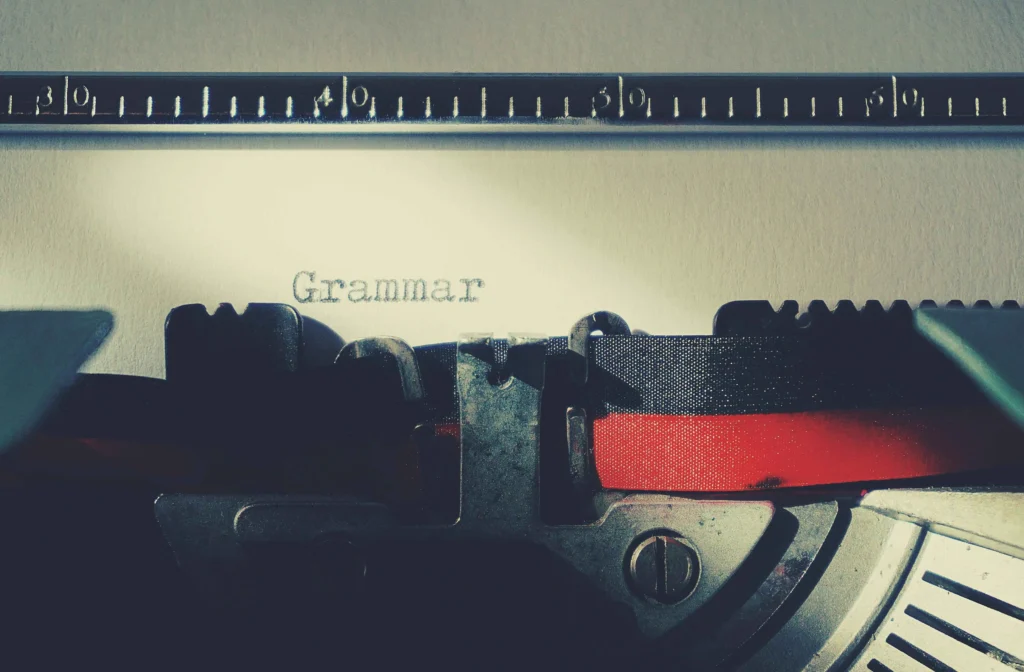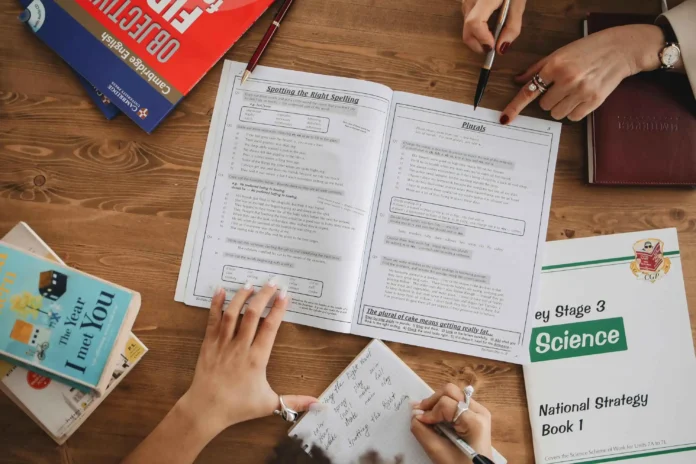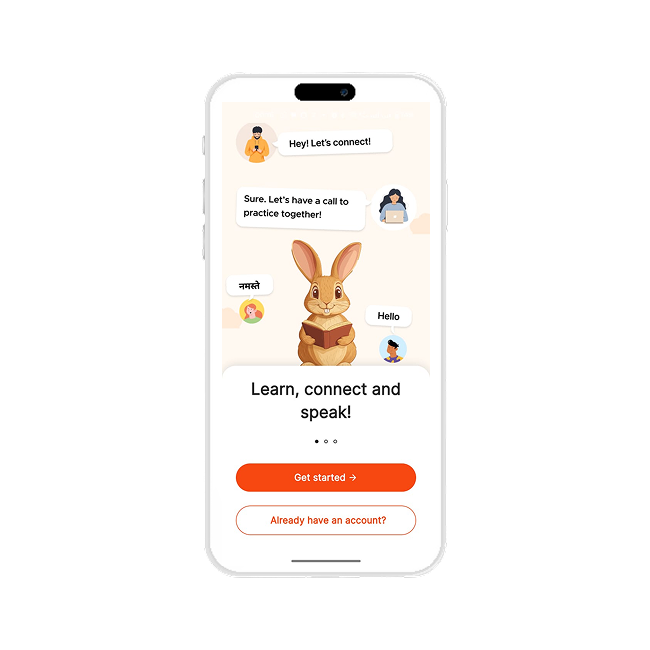Understanding the parts of speech is fundamental to mastering English grammar. Every word in the English language belongs to one of these eight categories, and recognizing their roles in a sentence can enhance both writing and speaking skills. In this detailed blog, we will cover each part of speech, provide examples, and end with a worksheet and FAQs to help you solidify your understanding.
What are Parts of Speech?
Parts of speech are categories that words are divided into based on their function in a sentence. These categories help define the role a word plays in a sentence—whether it’s a subject, object, or something else. The eight primary parts of speech are:
- Nouns
- Pronouns
- Verbs
- Adjectives
- Adverbs
- Prepositions
- Conjunctions
- Interjections
Let’s explore each part of speech in detail, with examples.
1. Nouns: The Building Blocks of Sentences
A noun is one of the most fundamental parts of speech in the English language. Nouns are words that represent people, places, things, or ideas. Without nouns, we would not be able to refer to any objects or concepts in communication. They are the central elements in a sentence because they typically serve as subjects or objects. Understanding nouns is essential for constructing meaningful and grammatically correct sentences.
Types of Nouns:
- Common Nouns: These are general names for things or people and are not capitalized unless they start a sentence. Examples include dog, city, car, teacher, and school. These nouns do not refer to anything specific but rather to a class of objects or people.
- Proper Nouns: Proper nouns are specific names of people, places, or things, and they are always capitalized. Examples include John, Paris, Eiffel Tower, and Amazon. Unlike common nouns, proper nouns identify a unique entity and are not used generically.
- Abstract Nouns: These refer to intangible concepts, ideas, or emotions. You cannot touch or see these nouns physically. Examples include love, happiness, freedom, and honesty. Abstract nouns often represent things we experience emotionally or mentally, rather than physically.
- Concrete Nouns: These are nouns that represent something that can be perceived through the five senses (sight, smell, touch, taste, and hearing). For instance, apple, dog, table, and car are concrete nouns because they refer to things that exist physically and can be interacted with directly.
- Collective Nouns: Collective nouns represent groups of people, animals, or things considered as a whole. For example, team, family, flock, audience, and committee. These nouns refer to multiple individuals or things acting as a unit.
Examples of Nouns in Sentences:
- The dog ran across the yard. (Here, “dog” is a concrete noun because it is a physical entity.)
- She enjoyed the freedom of being outdoors. (In this example, “freedom” is an abstract noun because it represents a concept, not a tangible object.)
- Paris is a beautiful city. (The noun “Paris” is a proper noun, naming a specific place.)
Nouns can also serve as objects in a sentence, taking the action of a verb. For example:
- She picked up the book from the table. (The noun “book” is the object of the verb “picked up.”)
Additionally, nouns can function as subjects in a sentence. Consider the example:
- The cat is sleeping on the couch. (In this case, “cat” is the subject of the sentence, and the verb “is sleeping” describes its action.)
Understanding how nouns function is critical to constructing both simple and complex sentences. They form the skeleton of sentences, with other parts of speech like verbs and adjectives adding meaning and detail.
2. Pronouns: Substitutes for Nouns
A pronoun is a word that takes the place of a noun. The primary purpose of a pronoun is to avoid repetition, making sentences smoother and easier to read or speak. For instance, instead of saying John went to John’s house, you could say John went to his house. In this case, “his” is the pronoun that replaces the noun “John.” Pronouns are an essential component of speech, and mastering them helps ensure sentences are both grammatically correct and fluid.
Types of Pronouns:
- Personal Pronouns: These pronouns refer to specific people or things and change based on number (singular/plural), gender (masculine/feminine/neutral), and case (subject/object). Examples include:
- Subject pronouns: I, you, he, she, it, we, they
- Object pronouns: me, you, him, her, it, us, them
- Possessive pronouns: mine, yours, his, hers, its, ours, theirs
- Examples:
- She is reading a book. (Here, “she” is a subject pronoun.)
- I gave the book to him. (Here, “him” is an object pronoun.)
- Possessive Pronouns: These pronouns indicate ownership or possession. They replace possessive nouns and help avoid redundancy.
- Examples: mine, yours, his, hers, ours, theirs
- Example:
- This book is mine. (Instead of saying “This book is my book,” the possessive pronoun “mine” is used.)
- Reflexive Pronouns: Reflexive pronouns refer back to the subject of the sentence. They are formed by adding -self or -selves to personal pronouns.
- Examples: myself, yourself, himself, herself, itself, ourselves, themselves
- Example:
- She looked at herself in the mirror. (The pronoun “herself” refers back to the subject “she.”)
- Relative Pronouns: These pronouns introduce relative clauses and link them to the main clause. They are essential for providing additional information about a noun.
- Examples: who, whom, whose, which, that
- Example:
- The woman who called me is my aunt. (Here, “who” introduces the relative clause that provides more information about the woman.)
- Demonstrative Pronouns: These pronouns point to specific things. They are often used to indicate something nearby or far away in terms of time or space.
- Examples: this, that, these, those
- Example:
- I want this one. (Here, “this” refers to a specific item.)
- Interrogative Pronouns: These pronouns are used to ask questions.
- Examples: who, whom, which, what
- Example:
- Who is coming to the party?
Pronouns in Action:
Pronouns replace nouns to make sentences more efficient and prevent unnecessary repetition. For example:
- Original: Maria went to Maria’s car.
- With Pronoun: Maria went to her car. (Here, “her” is the pronoun that replaces “Maria’s.”)
In spoken and written English, using pronouns correctly is vital for clarity and coherence. Misusing pronouns (such as using the wrong case or number) can confuse the reader or listener. It’s essential to practice using the correct pronouns based on their function in the sentence, whether they are subjects, objects, or show possession.

3. Verbs: The Action Words
A verb is a word that expresses an action, occurrence, or state of being. Verbs are the backbone of any sentence because they describe what the subject is doing or what is happening to the subject. Without verbs, sentences would lack meaning and would be incomplete.
Types of Verbs:
- Action Verbs: These verbs show physical or mental action. Action verbs express something that can be done, such as running, jumping, thinking, or talking.
- Examples: run, eat, write, think, talk, jump
- Example:
- She writes a letter every day. (Here, “writes” shows the action performed by the subject “she.”)
- Linking Verbs: Linking verbs do not express action. Instead, they connect the subject of a sentence with a subject complement (a word or phrase that describes or identifies the subject). The most common linking verb is the verb to be, but others include seem, become, appear, feel, look, taste, and sound.
- Examples: am, is, are, was, were, seem, become
- Example:
- He is a doctor. (Here, “is” links the subject “he” with the subject complement “doctor.”)
- The cake smells delicious. (The verb “smells” is linking the subject “cake” with the description “delicious.”)
- Auxiliary (Helping) Verbs: These verbs assist the main verb in a sentence by expressing tense, mood, or voice. Common auxiliary verbs include have, be, and do, as well as modal verbs like can, will, must, and should.
- Examples: have, has, am, is, are, will, can, should
- Example:
- She has finished her homework. (Here, “has” is the auxiliary verb helping the main verb “finished.”)
- They can swim very well. (The modal verb “can” helps to express ability.)
- Transitive and Intransitive Verbs:
- Transitive verbs require an object to complete their meaning. For example, in the sentence She kicked the ball, “kicked” is a transitive verb, and “ball” is the object.
- Intransitive verbs do not require an object. For example, She sleeps. In this sentence, “sleeps” does not need an object to complete the meaning.
Verb Tenses:
Verbs can also change their form to show the time of an action or state. There are three primary tenses: past, present, and future. Each of these can be subdivided into different aspects to indicate the completion, duration, or frequency of an action. These include:
- Present tense (I eat)
- Past tense (I ate)
- Future tense (I will eat)
By mastering verbs and understanding their various forms and functions, you can express actions and states of being clearly, effectively, and with grammatical precision.
4. Adjectives: Describing and Modifying Nouns
An adjective is a word that describes, modifies, or gives more information about a noun or pronoun. Adjectives provide more detail and help readers or listeners visualize the noun more clearly. For example, in the sentence The quick fox jumped over the lazy dog, the adjectives quick and lazy describe the nouns fox and dog, respectively.
Types of Adjectives:
- Descriptive Adjectives: These adjectives provide specific details about the qualities of a noun. They describe what something is like in terms of appearance, size, shape, color, or other characteristics.
- Examples: beautiful, small, red, tall, soft
- Example:
- She wore a beautiful dress to the party. (“Beautiful” describes the dress.)
- Quantitative Adjectives: These adjectives express the quantity or amount of something, giving a sense of how much or how many.
- Examples: some, many, few, all, several
- Example:
- I have three siblings. (“Three” describes the number of siblings.)
- Demonstrative Adjectives: These adjectives point out specific things or people. They are used to indicate which noun the speaker is referring to.
- Examples: this, that, these, those
- Example:
- I like this book. (“This” points to a specific book.)
- Possessive Adjectives: These adjectives indicate ownership or possession. They are similar to possessive pronouns but function differently in the sentence.
- Examples: my, your, his, her, its, our, their
- Example:
- This is my pencil. (“My” shows possession of the pencil.)
- Interrogative Adjectives: These adjectives are used to ask questions about nouns.
- Examples: which, what, whose
- Example:
- Which movie are we watching? (“Which” asks for a specific noun, in this case, a movie.)
Adjective Placement:
Adjectives typically come before the noun they modify. However, they can also follow a linking verb (as in The sky is blue). When multiple adjectives are used, they usually follow a specific order, starting with quantity, followed by opinion, size, age, shape, color, proper adjectives, and purpose.
Adjectives in Action:
- The delicious cake was eaten quickly. (The adjective “delicious” modifies the noun “cake.”)
- We adopted a big dog. (The adjective “big” describes the size of the dog.)
Adjectives play a vital role in providing more vivid and specific information, helping the listener or reader form a clearer mental picture.

5. Adverbs: Modifying Verbs, Adjectives, and Other Adverbs
An adverb is a word that modifies or describes a verb, an adjective, or another adverb. Adverbs typically tell us how, when, where, how often, or to what degree something happens. They can add richness and detail to sentences by providing more context about the action or description.
Types of Adverbs:
- Adverbs of Manner: These adverbs describe how an action is performed. They usually answer the question “How?”
- Examples: quickly, easily, carefully, loudly, happily
- Example:
- She sings beautifully. (The adverb “beautifully” describes how she sings.)
- Adverbs of Time: These adverbs provide information about when an action occurs. They answer the question “When?”
- Examples: now, soon, yesterday, today, later, always
- Example:
- I will call you tomorrow. (“Tomorrow” answers when the action will happen.)
- Adverbs of Place: These adverbs indicate where an action takes place. They answer the question “Where?”
- Examples: here, there, everywhere, near, upstairs
- Example:
- We will meet there. (“There” tells us where the meeting will take place.)
- Adverbs of Frequency: These adverbs tell us how often something happens. They answer the question “How often?”
- Examples: always, never, often, seldom, usually
- Example:
- She always arrives early to work. (“Always” indicates the frequency of the action.)
- Adverbs of Degree: These adverbs describe the intensity or extent of an action, adjective, or another adverb. They answer the question “How much?” or “To what extent?”
- Examples: very, too, quite, almost, extremely
- Example:
- He is very tall. (“Very” modifies the adjective “tall,” indicating how tall he is.)
Adverb Placement:
Adverbs can be placed at various positions in a sentence. They can appear at the beginning, middle, or end of a sentence, depending on the type of adverb and what it is modifying. For example:
- She speaks quickly. (Adverb modifies the verb.)
- The movie was extremely interesting. (Adverb modifies the adjective.)
- He runs quite fast. (Adverb modifies another adverb.)
By modifying verbs, adjectives, or other adverbs, adverbs allow us to add essential details to the actions, qualities, or intensities being described in a sentence.
6. Prepositions: Showing Relationships
A preposition is a word that shows the relationship between a noun (or pronoun) and other words in a sentence. Prepositions often indicate time, place, direction, or manner. They are typically followed by a noun or pronoun (called the object of the preposition) to form a prepositional phrase.
Types of Prepositions:
- Prepositions of Time: These prepositions tell us when something happens or how long it happens.
- Examples: at, on, in, before, after
- Example:
- The meeting is at 3 PM. (The preposition “at” indicates the time of the meeting.)
- Prepositions of Place: These prepositions show where something is located.
- Examples: in, on, under, over, beside
- Example:
- The keys are on the table. (The preposition “on” shows the location of the keys.)
- Prepositions of Direction: These prepositions indicate the direction in which something is moving.
- Examples: to, towards, into, onto
- Example:
- She walked to the store. (The preposition “to” shows the direction of her movement.)
- Prepositions of Manner: These prepositions describe how something is done.
- Examples: by, with, like
- Example:
- She painted the picture with a brush. (The preposition “with” explains the manner in which she painted.)
Prepositions in Action:
Prepositions are essential for connecting different parts of a sentence. They indicate spatial, temporal, or directional relationships, helping to establish the context of an action. For example:
- The cat jumped over the fence. (The preposition “over” shows the relationship between the cat and the fence.)
- We will go after dinner. (The preposition “after” shows the time relation between the two events.)
Understanding prepositions is crucial for forming clear and accurate sentences. By showing how one element relates to another, prepositions provide important details about the action or situation described.
7. Conjunctions: Connecting Words and Ideas
A conjunction is a word that connects two or more words, phrases, or clauses within a sentence. Conjunctions are essential for joining related thoughts and ensuring the sentence flows smoothly.
Types of Conjunctions:
- Coordinating Conjunctions: These conjunctions connect words, phrases, or independent clauses of equal importance. The most common coordinating conjunctions are remembered by the acronym FANBOYS (For, And, Nor, But, Or, Yet, So).
- Examples: and, but, or, so, yet, for, nor
- Example:
- I wanted to go to the beach, but it started raining. (“But” connects two contrasting ideas.)
- Subordinating Conjunctions: These conjunctions connect an independent clause with a dependent clause, indicating the relationship between them. They show cause, time, condition, contrast, and more.
- Examples: because, although, since, if, when, while
- Example:
- I stayed home because it was raining. (“Because” connects the reason with the action.)
- Correlative Conjunctions: These conjunctions work in pairs to connect balanced words or phrases.
- Examples: either…or, neither…nor, both…and, not only…but also
- Example:
- She both studied hard and practiced daily. (“Both…and” connects the two related actions.)
Conjunctions in Action:
Conjunctions allow us to combine related ideas, making sentences more complex and allowing for more nuanced expressions. For example:
- I have to finish my work, so I cannot come to the party. (The conjunction “so” connects the cause and effect.)
By using conjunctions effectively, we can connect ideas in a coherent and structured manner, improving the clarity and flow of our writing.
8. Interjections: Expressing Emotions or Reactions
An interjection is a word or phrase that expresses strong emotion, surprise, or reaction. Interjections are often used in speech and writing to convey feelings or exclamations. They are usually set off by punctuation, often an exclamation mark, to emphasize the emotion behind the expression.
Types of Interjections:
- Exclamatory Interjections: These express strong feelings or sudden reactions. They can convey joy, surprise, anger, or excitement.
- Examples: Wow!, Oh no!, Yikes!, Hooray!, Ouch!
- Example:
- Wow! That was an incredible performance! (“Wow!” expresses amazement and surprise.)
- Mild Interjections: These are softer reactions, often used in everyday speech or writing to express a more moderate emotion.
- Examples: Well, Oh, Hmm, Ah
- Example:
- Hmm, I’m not sure about that. (“Hmm” expresses uncertainty or hesitation.)
- Interjections of Greeting or Farewell: These interjections are used to greet someone or say goodbye.
- Examples: Hello!, Goodbye!, Hey!
- Example:
- Hello! How have you been? (“Hello” is a greeting used to begin a conversation.)
- Interjections of Surprise or Disbelief: These interjections convey surprise or disbelief in response to unexpected events.
- Examples: Really?, No way!, You don’t say!
- Example:
- No way! You got the job? (“No way” expresses disbelief or surprise.)
Interjections in Action:
Interjections are unique because they are standalone expressions and are not grammatically linked to other parts of the sentence. They serve to show the speaker’s emotions or reactions in a direct and impactful way. For example:
- Ouch! That hurt! (“Ouch” conveys the speaker’s reaction to pain.)
- Hooray! We won the game! (“Hooray” expresses excitement and joy about the victory.)
While they are not essential to the structure of a sentence, interjections are often used to add energy, emphasis, and personality to speech or writing.
9. Pronouns: Replacing Nouns to Avoid Repetition
A pronoun is a word that takes the place of a noun to avoid repetition and make sentences easier to understand. Pronouns can refer to people, objects, or things and can be used in various contexts to replace specific nouns that have already been mentioned or are understood from the context.
Types of Pronouns:
- Personal Pronouns: These pronouns refer to specific people or things. They are divided into subject and object forms, depending on their role in the sentence.
- Examples (subject pronouns): I, you, he, she, it, we, they
- Examples (object pronouns): me, you, him, her, it, us, them
- Example:
- She went to the store. (Subject pronoun “she” replaces the noun for a female person.)
- I saw her at the park. (Object pronoun “her” replaces the noun for a female person as the object of the verb.)
- Possessive Pronouns: These pronouns show ownership or possession.
- Examples: mine, yours, his, hers, ours, theirs
- Example:
- This book is mine. (“Mine” indicates that the book belongs to the speaker.)
- Reflexive Pronouns: These pronouns are used when the subject and the object of the sentence refer to the same person or thing. They end in -self or -selves.
- Examples: myself, yourself, himself, herself, itself, ourselves, themselves
- Example:
- I made the cake myself. (The reflexive pronoun “myself” shows that the subject (I) and the object (me) are the same.)
- Demonstrative Pronouns: These pronouns point to specific people or things.
- Examples: this, that, these, those
- Example:
- These are my favorite shoes. (“These” points to specific shoes.)
- Interrogative Pronouns: These pronouns are used to ask questions.
- Examples: who, what, which, whom, whose
- Example:
- Who is coming to the party? (“Who” asks about a person.)
- Indefinite Pronouns: These pronouns refer to non-specific people or things.
- Examples: anyone, everyone, someone, none, somebody, anything
- Example:
- Everyone is invited to the event. (“Everyone” refers to an unspecified group of people.)
Pronouns in Action:
Pronouns are vital for avoiding repetition and making sentences more efficient. For example:
- Maria is going to the store. She is buying groceries. (“She” replaces “Maria” in the second sentence.)
- This book is interesting, and I really like it. (“It” replaces “book.”)
By using pronouns correctly, we can make writing and speech more fluid and less repetitive.

10. Articles: Defining and Indefining Nouns
An article is a type of determiner that is used before a noun to specify whether the noun is referring to something specific or general. There are two types of articles: definite and indefinite.
Types of Articles:
- Definite Article: The definite article is the. It is used to refer to specific or known items.
- Example: I saw the movie you recommended. (“The” refers to a specific movie both the speaker and listener know about.)
- Indefinite Articles: The indefinite articles are a and an. They are used to refer to a non-specific item or something mentioned for the first time.
- Examples: a (used before consonant sounds), an (used before vowel sounds).
- Examples:
- I saw a cat in the yard. (“A” refers to any cat, not a specific one.)
- She ate an apple. (“An” refers to any apple, not a specific one.)
Article Usage:
Articles help clarify whether we are speaking about something specific or something more general. The choice between “a” and “an” depends on the sound that follows the article. “An” is used before words that begin with a vowel sound, while “a” is used before words that begin with a consonant sound.
By mastering the use of articles, you can make your language more precise, allowing you to refer to specific objects or more general ones with ease.
Parts of Speech Worksheet
To help reinforce your understanding of the parts of speech, here’s a worksheet with a few sentences. Identify the part of speech for each word.
Exercise 1: Identify the Parts of Speech
- She () runs () quickly (___) to the store.
- The dog () is brown () and friendly (___).
- I have never () seen a movie () like that before.
- Wow (), that was a fantastic () performance!
They () are going to () the party tomorrow (___).
You can also try one of our Official Application ENGLISHBHASHI available in Play Store with which you can refine your English Skills we assure you that you will be able to speak English much better in just 30 Days.
Share this post with your friends and family who are eager to enhance their English skills. Let’s inspire and empower each other on this incredible language-learning path. Together, we can achieve greatness! So, what are you waiting for? Visit EnglishBhashi today and embark on an exciting adventure of language learning.
Frequently Asked Questions (FAQs)
What is the importance of understanding parts of speech?
Understanding parts of speech is crucial for constructing clear and effective sentences. It helps recognize each word's role, ensuring that sentences are grammatically correct and coherent.
Are there only 8 parts of speech in English?
While there are traditionally eight parts of speech, some grammarians recognize more, such as determiners or interjections, though they are often considered part of other categories.
How can I identify the parts of speech in a sentence?
To identify the parts of speech, break the sentence into words and analyze their function. For example, ask yourself: Is the word showing an action (verb)? Does it describe a noun (adjective)? Is it referring to a specific thing (pronoun)?
Can a word belong to more than one part of speech?
Yes, many words can function as different parts of speech depending on how they are used. For example, "run" can be a verb ("I run every morning") or a noun ("She went for a run").


